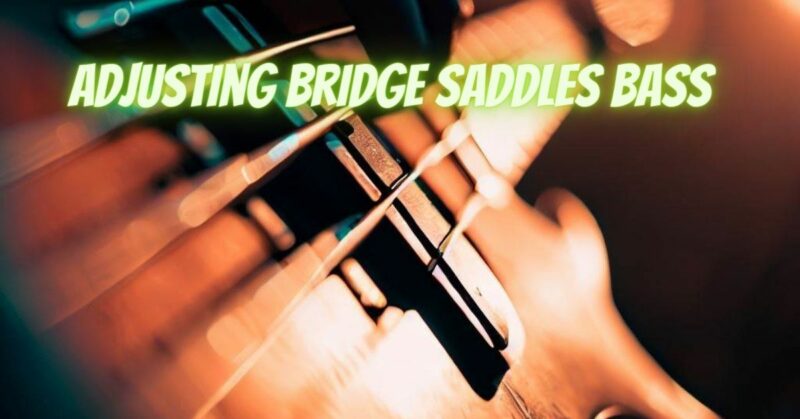The bridge saddles on a bass guitar play a critical role in achieving accurate intonation, ensuring that each string produces in-tune notes along the entire fretboard. Adjusting the bridge saddles is essential for maintaining excellent sound quality and playability on your bass guitar. In this article, we will delve into the importance of saddle adjustment for intonation and provide a step-by-step guide on how to fine-tune this crucial aspect of your bass guitar’s setup.
Understanding the Significance of Saddle Adjustment
The saddles on a bass guitar’s bridge are the points where the strings make contact with the instrument. Their precise positioning relative to the neck and frets directly influences the intonation, which is the ability of each string to produce accurate pitches across the entire range of the bass guitar.
Steps for Saddle Adjustment for Intonation on a Bass Guitar:
Before you begin, gather the necessary tools, including a digital tuner, a small screwdriver (for saddle adjustments), and a capo.
- Prepare Your Bass Guitar:
- Ensure that your bass guitar is in good condition with a fresh set of strings.
- Tune your bass guitar to standard pitch using a digital tuner.
- Check the Intonation:
- Play each open string and compare it to the 12th fret harmonic or fretted note.
- If the 12th fret note is sharp, the saddle needs to be moved away from the neck. If it’s flat, move the saddle closer to the neck.
- Adjust the Saddle:
- Locate the saddles on your bass guitar’s bridge. Depending on the type of bridge, the saddles may be adjustable using small screws or set screws.
- To flatten the intonation (if the 12th fret note is sharp), slightly loosen the screws and move the saddle away from the neck.
- To sharpen the intonation (if the 12th fret note is flat), slightly loosen the screws and move the saddle closer to the neck.
- Retune the string and check the intonation again. Repeat the adjustment process as needed to achieve accurate intonation.
- Repeat for All Strings:
- Adjust the saddle for each string individually, following the same procedure outlined above.
- Ensure that the other strings are muted or fretted while adjusting each string to isolate the one you’re working on.
- Check Overall Balance:
- After adjusting all the strings, play the bass guitar and listen for overall balance and tonal quality.
- Make fine-tuning adjustments to individual strings if necessary.
- Check for Proper String Break Angle:
- Ensure that the strings maintain a proper break angle over the saddle, which contributes to good tone and sustain.
- If the break angle is too shallow, you may need to raise the saddle. If it’s too steep, lowering the saddle may help.
- Recheck and Fine-Tune:
- After making adjustments, recheck the intonation and overall playability.
- Make further adjustments if necessary to achieve your desired setup.
Professional Assistance
Adjusting the bridge saddles for intonation on a bass guitar requires precision, and incorrect adjustments can negatively affect your instrument’s playability and sound quality. If you are unsure about making these adjustments or encounter difficulties, it’s advisable to seek the expertise of a professional bass guitar technician. They have the knowledge and tools required to ensure your bass guitar’s saddles are positioned correctly for optimal intonation and performance.
Proper saddle adjustment for intonation is crucial for achieving accurate pitch across the entire fretboard of your bass guitar. By following these steps and paying attention to each string’s intonation and overall balance, you can ensure that your instrument plays in tune and delivers exceptional sound quality. This allows you to explore your musical creativity with precision and confidence, knowing that your bass guitar is finely tuned and ready to produce outstanding music.

